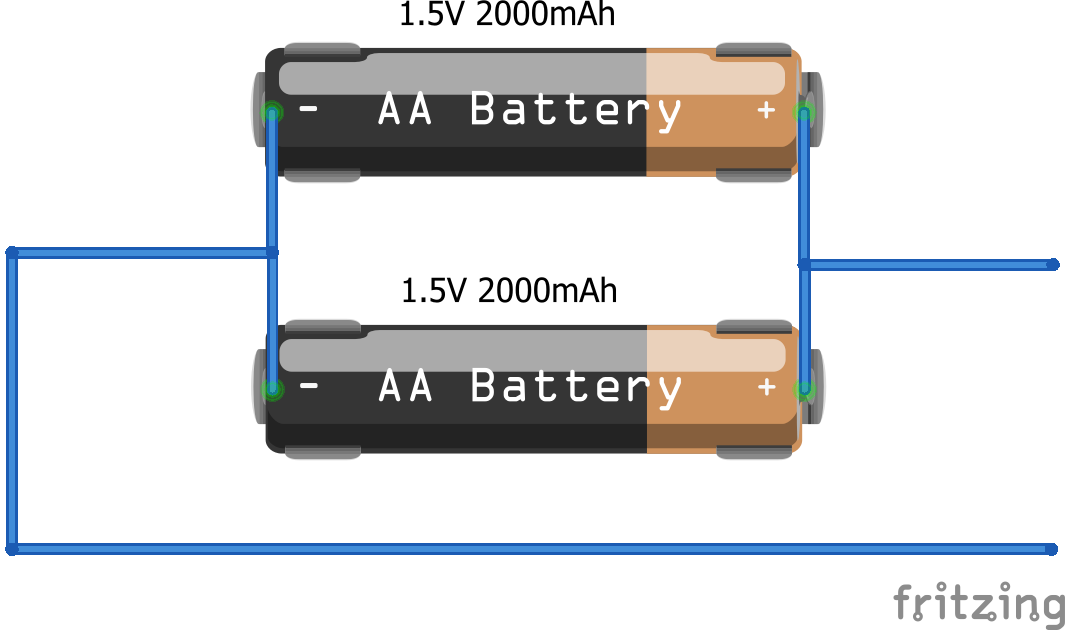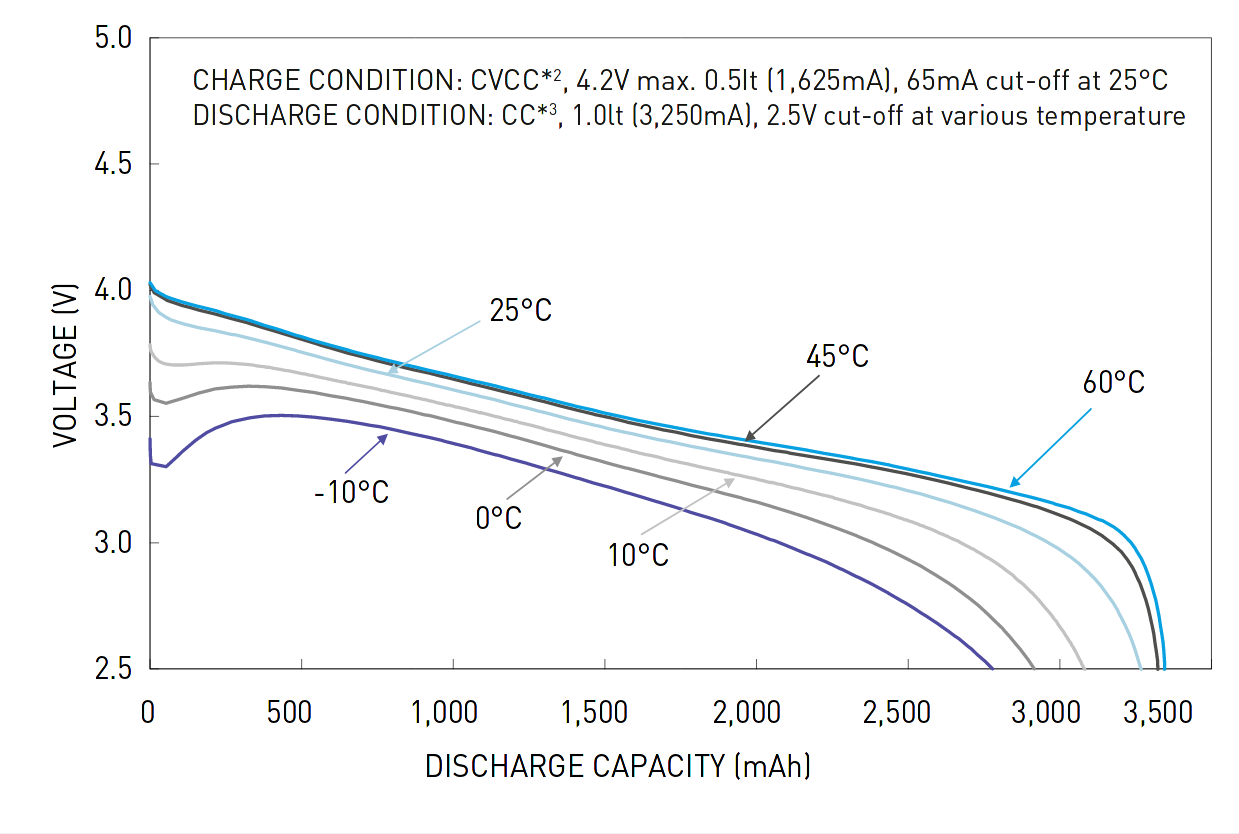Battery Life
When developing new devices for Internet of Things, it is always an important question of how long can the device last when it is powered by the battery. The answer to this question depends on two things:
- from the capacity of the battery, and
- from the consumption of the device

Battery Capacity
The capacity of the battery is stated in Ah (ampere-hour), resp. in lower units of mAh (milliampere-hour). The battery has a one-hour ampere capacity, if it is theoretically able within its nominal voltage to deliver into the load, a current of 1A for 1 hour.
The capacity of batteries of the same type may vary depending on the manufacturer. A summary of capacities of the most popular batteries in the market is shown in the following table. Batteries are labeled according to ANSI designation. According to IEC, only coin and button batteries are marked.
| Type | Tag | Capacity | Voltage |
|---|---|---|---|
| coin cell | CR2032 | 190 - 225 mAh | 3 V |
| button cell | R44 | 15 - 600 mAh | 3 V |
| pencil-sized | AA | 600 - 3400 mAh | 1.2 - 1.5 V |
| micro | AAA | 350 - 1250 mAh | 1.25 - 1.5 V |
| 9V battery | 9V | 400 - 1200 mAh | 7.2 - 9 V |
However, the fact that the battery is capable of delivering a current of size 1A does not mean that it will supply it constantly all the time. The size of the current, which is taken from the battery, depends on the size of the load connected to it. Based on Ohm's law, it can be said that if the load is small, the battery will supply a high current. On the other hand when the load is high, it will supply small current. For example, if a battery with the capacity of 1Ah is connected to a load that takes -500mA, will be able to supply this stream 2h. If a battery requiring 2A is connected to such a load, the battery will only be able to deliver a current of 30m.
The lifetime of a battery, resp. the time that the device can be powered from the battery can be calculated as a division of the capacity of the battery and the size of the current flowing the load.
For example, if to a battery with a capacity of 1000mAh an Arduino Uno is connected, which after connecting takes a current of approximately 50mA, than it lasts for 20h :
According to this relationship, theoretically a battery with the capacity of 1Ah could supply a current of the size 100A for 6m (_0.01h) to the load. However, the maximum amount of battery consumption is limited by the internal resistance. This resistance is very small (order mΩ) and is also the source of heat that arises when supplying the current to the load. The information on the maximum current that the battery is able to safely supply, can be found in the datasheet of the corresponding battery.

From the battery discharging characteristic NCR18650B, it can be seen that the larger current is taken of the battery, the lower is the capacity and the faster the battery discharges (the greater is the heat loss). Similarly, it is possible to see from the characteristic that the larger current is taken from the battery, the lower is the output voltage. This is due to the internal resistance of the battery.
From the charasteristics it is possible to see the process of the discharge behavior under different conditions. Therefore, the data on the battery can be taken as an approximate value under ideal conditions. In the case of the NCR18650B battery, for example, the voltage is 3.7V and the capacity is 3400mAh.
Comparing two batteries with the same capacity but different nominal voltages would, appear to supply the same amount of energy. That is not true. A battery with a higher nominal voltage will have more power. The amount of energy the battery can deliver depends not only on its capacity but also on the nominal voltage. In order to express the amount of energy that the battery can deliver, the unit Wh (watt) is used and it is possible to calculate it as a multiple of the capacity of the battery and its nominal voltage:
For example, the NCR18650B battery has according to the datasheet a nominal voltage of 3.6V and a (typical) capacity of 3350mAh.
It is not recommended to consider rechargeable batteries when designing and operating IoT devices. Rechargeable batteries are in devices that are used daily, MP3 players, cameras, or keyboards and mouses. The use of rechargeable batteries is in this case financially better than buying new batteries.
IoT devices are devices that are not used daily, constantly. Often, such a device only wakes up, reads the value from the sensor, sends it to the processing, and sleeps again. Rechargeable batteries suffer from self-draining, which reduces their life-time. Even without a rechargeable battery being used, it can drain itself after a few months. By using non-rechargeable (alkaline) batteries, this problem can be avoided. Alkaline battery powered devices can run for months to years without the need for a battery replacement.
Device Consumption
Determining the device's consumption is a little more complicated. As a result of the operation of the device, depending on other connected components (circuits), there can be taken a variety of energy at different times. Thus, if the device is intended to be powered from the battery for as long as possible, consideration should be given to using each element in the device, its consumption, as well as utilizing the appropriate features of the microcontroller to achieve the lowest possible consumption. These options will be described in the following chapters.
Serial vs Parallel
Connecting multiple batteries together has also an Impact on battery life. The impact can be seen after the type of interconnection we choose. We can connect the batteries either to series , parallel or serial-parallel .
When connecting batteries serially, the battery poles engage oppositely. This means that the positive pole of one battery is connected to the negative pole of the other battery. The resulting nominal voltage of the formed battery will be the sum of nominal batteries connected to the series. The resulting capacity is again calculated as the average value of the capacities of all the batteries involved.
For example, if two batteries with a capacity of 2000mAh and a nominal voltage of 1.5V are connected in series, the resulting nominal voltage value will be _3V. However, the battery capacity will not change.

When connecting the batteries in parallel, the same poles are connected. This means that the positive pole of the one battery is connected to the positive pole of the other battery. The same applies to negative poles. The resulting nominal voltage of the battery connected in this way arises as the average voltage of the connected batteries. The resulting capacity will be the addition of the capacities of the connected batteries.
For example, if two batteries with a capacity of 2000mAh and a nominal voltage of 1.5V are connected in parallel, the nominal voltage will remain at 1.5V. However, the battery capacity increases twice (_4000mAh).

Of course, it is possible to create a serial-parallel connection to combine the characteristics of serial and parallel wiring. For example, if the batteries are connected according to the following connection, the resulting nominal voltage of the battery of this kind will be 3V and its capacity will be 4000mA.

Issues when Connecting Batteries
When using multiple batteries in serial and parallel wiring, it is recommended to use the same batteries - in terms of nominal voltage, but especially in terms of capacity. A low-capacity battery will cause potential imbalance, and if the batteries are connected parallely, other batteries will try to recharge the battery. In the case of serial connection, the battery with the lowest capacity when connected to the load it is discharged first, which causes the device to shut down prematurely. In charging mode, the charger first recharges and will be overcharged longer than other batteries.
However, it is also possible to come up to batteries that partially violate this approach. For example, laptop batteries often consist of multiple cells that are combined. For example, in a combination referred to as 4s2p, the 4 batteries are connected in series to reach a nominal voltage level of 14.4V and 2 are connected in parallel to increase the battery capacity, from 2400mAh to 4800mAh.
When replacing batteries, it is recommended that you replace the entire battery pack with a new one for the above reasons. This also applies to cases where one battery is broken in a battery composed of several cells. Replacing one single cell would cause imbalances. Therefore, replace the entire battery pack with a new one.
When placing IoT devices in outdoor areas, care must be taken to ensure the temperature of the batteries. The effect of temperature on battery life is direct - the colder the environment, the sooner the battery discharges. The cold battery increases internal resistance and reduces its capacity. The ideal temperature for correct operation of the battery is usually a room temperature of about 20°C (68°F). When used outside, it is therefore always advisable to verify the temperature conditions of the selected battery in its datasheet.

The temperature dependence of the battery can also be seen in the battery discharge temperature characteristic NCR18650B - the fastest the battery is discharged at the lowest temperature. From the characteristic, it is also possible to see that the effect of the temperature is also on the output voltage size.